Published “Draft design of the orbit monitoring system of the E-1 object”
On April 10, the Russian Space Systems company, which is part of Roscosmos, published an electronic version of a historical document. Anyone can now familiarize themselves with the “Outline design of the system for monitoring the orbit of an E-1 object.” The document was prepared in May, 1958, by the Research Institute No. XXUMX (now the Research and Production Center for Automation and Instrumentation named after NA Pilyugin). The 885 original typewritten pages provide information about the goals and objectives of the project, how to achieve them, etc. Most of the document is devoted to the technical description of the ground complex and the principles of its work.
Already in the introduction, the authors of the document noted the exceptional complexity of the challenges. The rocket and the E-1 were required to be tracked at distances that were two orders of magnitude greater than the usual distances for that time. In addition, the work of designers could complicate the short time allotted for the work. Nevertheless, methods were found to track the flight of a rocket and an automatic station from the Earth, as well as methods for estimating the trajectory and reception of telemetry signals.
The composition of ground-based electronic means should have been a radar station, a system for receiving data from the spacecraft and a device for remote control. When shaping the look of the new system, the research institute-885 specialists had to find the optimal ranges for the operation of radio equipment, determine the composition of the complex and the functions of its individual components, and also find the most advantageous places for their deployment.
The calculations in the draft design showed the necessary characteristics of antenna devices, the construction of which was a very difficult task. It was found that the required transmission and reception characteristics of the radio signal will show ground antennas with an area of at least 400 sq. M or a diameter of at least 30 m. There were no existing products of this kind in our country; there was no possibility of their rapid creation from scratch. In this regard, it was proposed to use suitable antenna sheets or create new similar products. They were planned to be mounted on existing rotary devices, previously obtained together with the American radar type SCR-627 and with the captured German “Big Würzburg”.
To monitor the operation of the E-1 object, several types of antennas were developed. The solution of different tasks was carried out with the help of a truncated parabolic reflector of large sizes and using rectangular blades with the appropriate dimensions. Installation on mobile supports allowed to provide maximum coverage of space and thereby increase the overall capabilities of the complex.
Together with the antennas had to work several instrumentation systems. So, on several ZIL-131 cars with standard body-wagons, it was proposed to install radio electronic equipment of the transmitter. With the help of cables, it had to be connected to the corresponding antenna. The receiving part of the complex was planned to be deployed permanently, in a separate building near the antenna post. In order to obtain the desired results and correct measurement, the two antennas had to be several kilometers apart.
It was proposed to equip receiving antennas with an automatic tracking system for a space object. Analyzing the signal from the onboard transmitter, such equipment had to change the position of the antenna, providing the best reception with maximum power and minimal interference. Such antenna pointing had to be carried out automatically.
As part of the measuring complex it was necessary to provide several separate communication systems. Some channels were designed to transfer data from one component to another, while others were necessary for people. According to the calculations, only voice data transmission was associated with known difficulties and could interfere with the proper operation of the entire complex.
The ground-based system should have included the means of recording signals. It was proposed to record all telemetry data and radar indicators on magnetic media. Also included in the equipment package was a photo set for shooting data displayed on screens.
One of the chapters of the published document is devoted to the selection of a place for the deployment of new radar facilities. Calculations showed that the product E-1 will fly to the moon about 36 hours. At the same time, the apparatus was supposed to rise above the horizon (relative to any point of the USSR with a latitude below 65 °) only a few times. It was found that the most convenient area for stationing is the south of the European part of the country. They decided to build a measuring point near the Crimean city of Simeiz, where at that time a radio astronomy facility of the Physics Institute of the Academy of Sciences was already functioning. His technical tools could be used in the new project.
The sketch project involved the deployment of a measuring point system on Mount Koshka. At the same time, its individual components should have been located at a distance of 5-6 km from each other. In accordance with the proposals of the project, part of the electronic equipment should be placed in stationary buildings, while other devices could be mounted on car chassis.
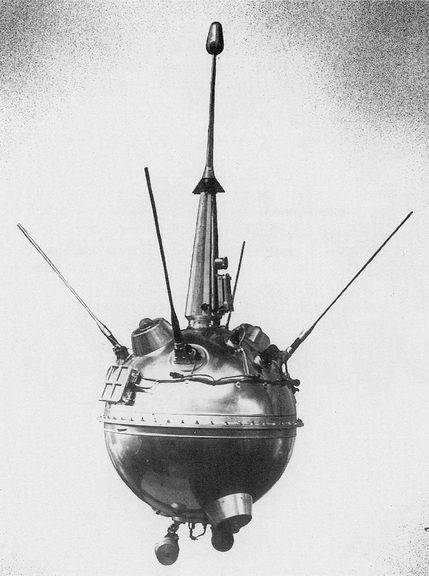
E-1A station
With the help of field tests with simulators of the E-1 product, optimum characteristics of radio equipment were determined. So, for the Earth-board radio link, the 102 MHz frequency was considered optimal. The device was supposed to transmit data to the Earth at a frequency of 183,6 MHz. Increasing the sensitivity of ground-based receivers reduced the transmitter power on board the E-1 to 100 W.
The proposed principles of operation of the “E-1” orbit monitoring system for their time were very progressive and bold. With the help of a number of radio systems, the azimuth and elevation should be determined, determining the direction to the interplanetary station. In addition, it was necessary to determine the distance between the Earth and the object, as well as the distance from the object to the Moon. Finally, it was necessary to measure the speed of the E-1. Telemetry signals should have arrived from orbit to Earth.
At the initial stage of the flight, telemetry transmission was to be carried out with the help of standard means of the launch vehicle 8K72 Vostok-L. The RTS-12-A telemetry system could communicate with the Earth using a third-stage rocket radio transmitter. After separation from it, the E-1 station should have included its own radio equipment. For some time, before entering the ground assets coverage area, the station could remain “invisible”. However, after a few minutes, the ground measuring point took it for tracking.
The determination of the distance to the spacecraft and its flight speed was proposed to be carried out with the help of pulsed radiation and an onboard transponder. With a frequency of 10 Hz, the ground measuring station was supposed to send pulses to the station. Having received the signal, she had to answer it on her own frequency. By the time for the passage of two signals automation could calculate the distance to the station. This technique provided acceptable accuracy, and moreover, did not require unacceptably high transmitter power, as could be the case when using standard radar with reception of the reflected signal.
Measurement of the distance between the E-1 and the Moon was assigned to the onboard equipment. The signals of the onboard transmitter, reflecting from the satellite of the Earth, could return to the automatic station. At distances less than 3-4 thousand km. She could confidently receive them and relay the ground complex. Further, the necessary data were calculated on Earth.
To measure the flight speed, it was proposed to use the Doppler effect. With the passage of E-1 on certain sections of the trajectory, the ground system and the spacecraft had to exchange relatively long radio pulses. By changing the frequency of the received signal, the measuring point could determine the flight speed of the station.
The deployment of the measuring point near the town of Simeiz allowed to get very good results. During the 36-hour flight, the E-1 station should have been in the field of view of this object three times. The first stage of control related to the initial part of the passive part of the trajectory. At the same time it was planned to use means of radio control. Further, the flight was controlled at a distance of 120-200 thousand km from Earth. The third time the station returned to the zone of visibility when flying at a distance of 320-400 thousand km. The passage of the apparatus in the last two sections was controlled using radar and telemetry means.
“The sketch project of the orbit monitoring system of the E-1 object was approved on the last day of May 1958. Soon, the development of design documentation began, after which the preparation of existing facilities for use in the new project began. It should be noted that not all of the available antennas in the Crimea were suitable for use in the "Moon" program. Some antenna posts had to be equipped with completely new canvases of increased dimensions. This somewhat complicated the project and shifted the deadlines for its implementation, but still allowed to get the desired results.
The first launch of the launch vehicle 8K72 "Vostok-L" with the apparatus E-1 №1 on board took place on September 23 1958 of the year. At 87-th second flight, before the completion of the first stage, the rocket collapsed. The launches of October 11 and December 4 also ended in an accident. Only 4 January 1959 was able to successfully launch the E-1 # 4, also known as Luna-1. However, the mission of the flight was not fully completed. Due to an error in the preparation of the flight program, the spacecraft passed at a considerable distance from the moon.
According to the results of the launch of the fourth apparatus, the project was reworked, and now the E-1А products were supplied to the start. In June, 1959, one of these stations was killed along with a missile. In early September, several unsuccessful attempts were made to launch the next carrier rocket with the “Luna” series. Several days later, a number of launches were canceled, and then the rocket was removed from the launch pad.
Finally, 12 September 1959, the device number 7, also known as "Luna-2", successfully entered the calculated trajectory. At estimated time on the evening of September 13, he fell on the Moon, in the western part of the Sea of Rains. Soon the third stage of the launch vehicle collided with the natural satellite of the Earth. First time in stories a product of earth origin appeared on the moon. In addition, metal pennants with the emblem of the Soviet Union were delivered to the surface of the satellite. Since a soft landing was not assumed, the automatic interplanetary station was destroyed, and its fragments, together with metal pennants, flew across the terrain.
After a successful hard landing of the station to the moon, further launches of the E-1A were canceled. Obtaining the desired results allowed the Soviet space industry to continue work and begin to create more advanced research systems.
“The E-1 object orbit radio monitoring system, built specifically for work with automatic stations, was able to work according to the staff schedule only twice within the framework of the first research program. She conducted on the trajectory of the apparatus E-1 №4 and Е-1А №7. In this case, the first deviated from the calculated trajectory and missed the moon, and the second successfully hit the target. To the best of our knowledge, no claims were made to the work of the ground controls.
The completion of work on the E-1 theme and the launch of new research projects had a definite impact on special objects in Simeiz. In the future, they were repeatedly upgraded and finalized in accordance with the latest achievements of the radio-electronic industry and taking into account the new requirements. The measuring point provided a number of studies and launches of various spacecraft. Thus, he made a significant contribution to the exploration of outer space.
To date, the early history of the Soviet space program has been studied quite well. Various documents, facts and memories are published and known. Nevertheless, some curious materials are still closed and from time to time become public. At this time, one of the enterprises in the space industry shared data on the draft design of the first domestic control and measurement system, designed to work with interplanetary stations. Hopefully, this will become a tradition, and soon the industry will share new documents.
Based on:
http://russianspacesystems.ru/
http://kik-sssr.ru/
http://rg.ru/
“Sketch design of the system for monitoring the orbit of an E-1 object:
http://russianspacesystems.ru/wp-content/uploads/2018/04/1958_NKU_BRK_Luna-2_Simeiz.pdf
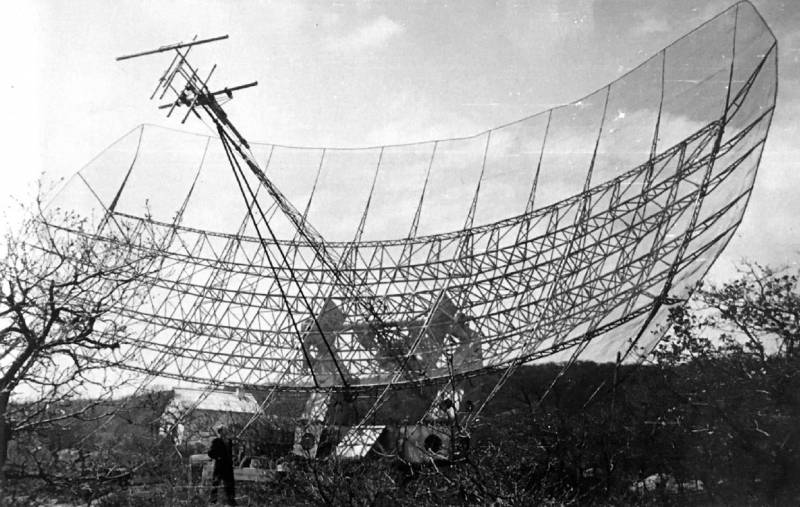
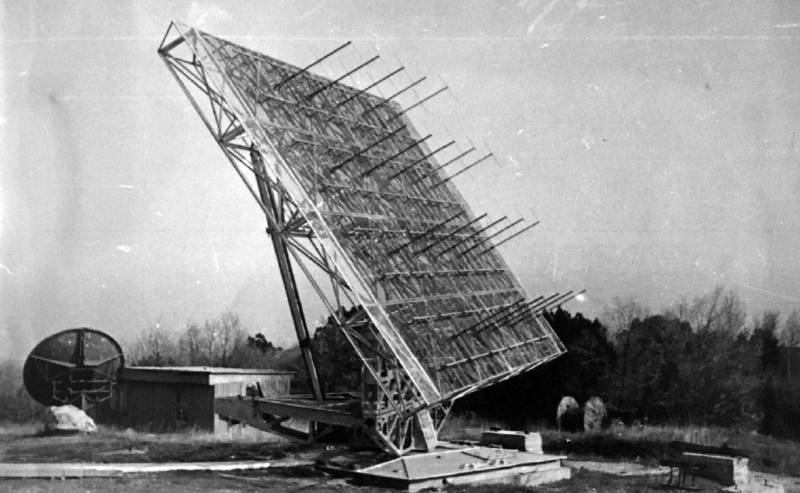
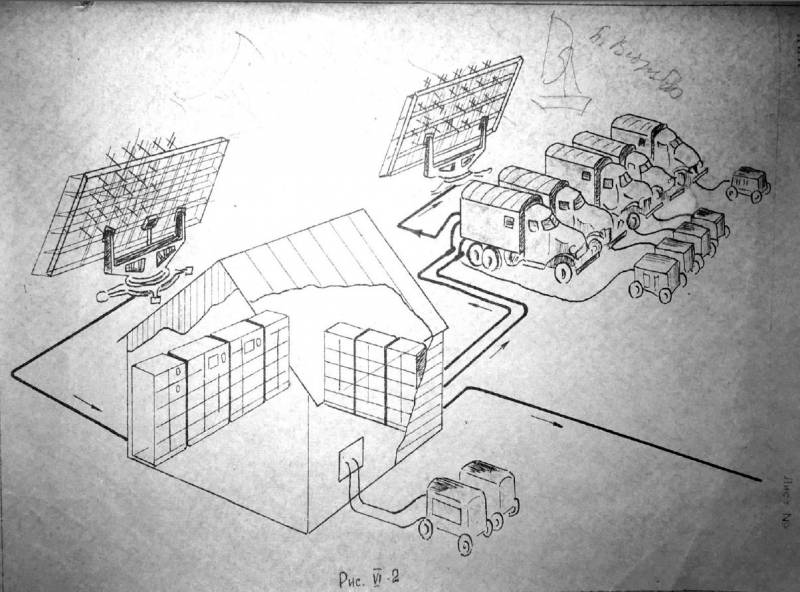
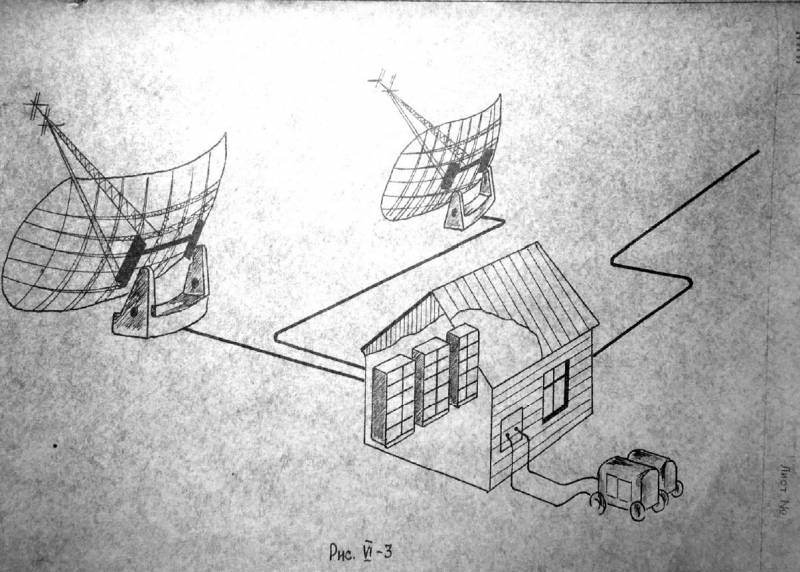
Information